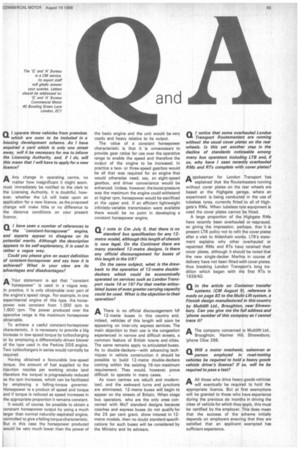Q I have seen a number of references to the - constant-horsepower engine,
Page 57

If you've noticed an error in this article please click here to report it so we can fix it.
and experts appear to disagree on its potential merits. Although the description appears to be self-explanatory, it is used in rather a vague way.
Could you please give an exact definition of constant-horsepower and say how it is achieved? What in your view are its advantages and disadvantages?
AYour statement is apt that "constant
horsepower" is used in a vague way. In practice, it is only obtainable over part of the engine's speed range. For example, in one experimental engine of this type, the horsepower was constant from 1,000 rpm to 1,800 rpm. The power produced over the operative range is the maximum horsepower obtainable.
To achieve a useful constant-horsepower characteristic, it is necessary to provide a big increase in low-speed torque by turbocharging or by employing a differentially-driven blower of the type used in the Perkins DDE engine. Two turbochargers in series would normally be required.
Having obtained a favourable low-speed torque, the amount of fuel supplied to the injection nozzles per working stroke {and therefore the torque) is progressively reduced as the rpm increases, which can be facilitated by employing a falling-torque governor. Horsepower is a product of speed and torque and if torque is reduced as speed increases in the appropriate proportion it remains constant.
It would, of course, be possible to obtain a constant horsepower output by using a much larger than normal naturally-aspirated engine, controlled to give a falling torque characteristic. But in this case the horsepower produced would be very much lower than the power of
the basic engine and the unit would be very costly and heavy relative to its output.
The value of a constant horsepower characteristic is that it is unnecessary to provide gear ratios for use over the operative range to enable the speed and therefore the output of the engine to be increased. In practice a twoor three-speed gearbox would be all that was required for an engine that would otherwise need, say, an eight-speed gearbox, and driver convenience would be enhanced. Unless, however, the boost pressure was the maximum the engine could withstand at higher rpm, horsepower would be sacrificed at the upper end. If an efficient lightweight infinitely-variable transmission were available there would be no point in developing a constant horsepower engine.




































































































